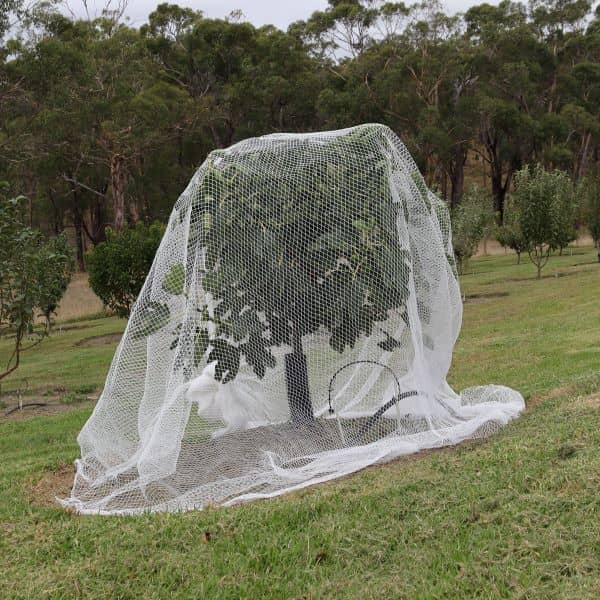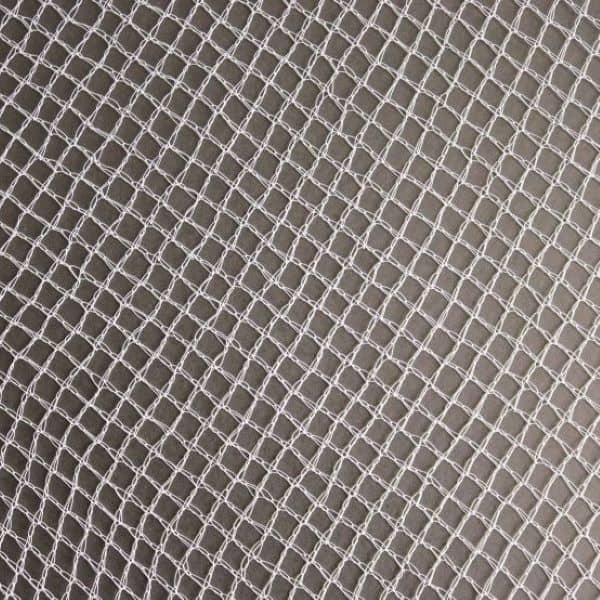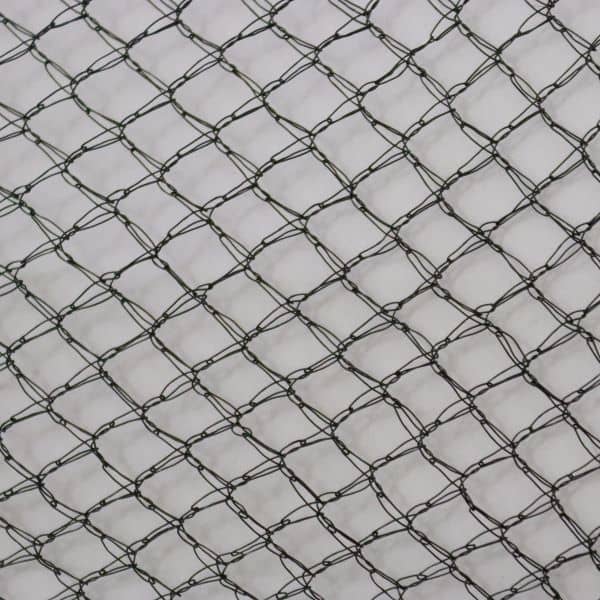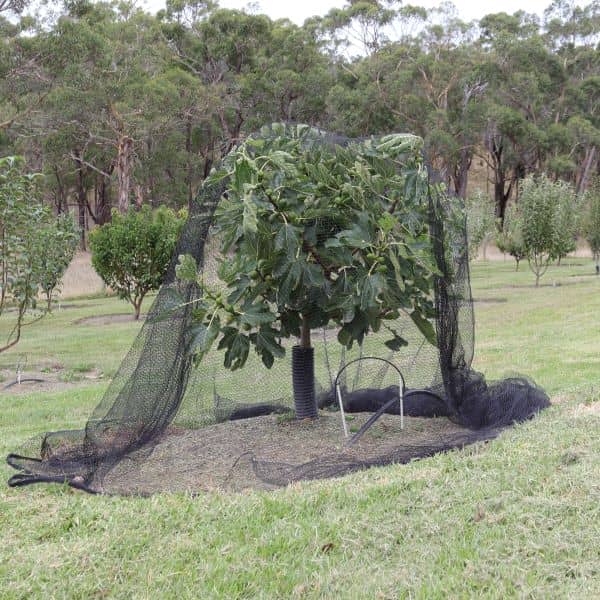If you want hassle-free growth of fruits then you need to protect them from birds. As they are a tempting treat for birds. The cheerful chirping can quickly turn into a gardener’s nightmare when birds swoop in to enjoy a feast at your expense. With the right strategies, you can safeguard your fruit trees and crops from these feathered foragers.
Birds can pose various threats to fruit trees, potentially causing significant damage to both the trees and the fruit. Here are some common ways in which birds can be detrimental to fruit trees:
- Feeding on Fruit: Birds are attracted to the fruits on trees, especially when the fruits are ripe. They peck at the fruit, causing physical damage and rendering the fruit unsuitable for consumption. This can lead to significant crop loss.
- Spreading Disease: Birds may carry diseases or pathogens on their beaks and feet, which can be transferred to the fruit when they feed. This can lead to the spread of diseases among the fruit trees and other plants in the vicinity.
- Damage to Blossoms and Buds: Birds may not wait for fruits to ripen and may eat or damage blossoms and buds. This can prevent the tree from producing fruit altogether.
- Stress and Disturbance: The presence of birds in fruit trees can stress the trees. Birds may perch on branches, causing them to break or weaken. Additionally, the disturbance from birds can disrupt the overall health and growth of the trees.
- Insect Predation: Some birds, like starlings and sparrows, feed on insects. While this might seem beneficial, they may also inadvertently harm the tree by disrupting the balance of beneficial and harmful insects in the ecosystem.
- Unsightly Droppings: Bird droppings on fruit and leaves not only make the fruit unappealing but can also lead to the growth of mould and fungi, further damaging the crop.
Use bird netting to protect your fruit trees and crops
Anti-bird netting is your first line of defence to protect your fruit trees and crops from birds. These nets create a physical barrier between your crops and the birds. When choosing bird netting for fruit trees, ensure it’s the right size mesh to prevent birds from poking their beaks through. Make sure it’s also sturdy and durable for long-term use.
Benefits of using bird netting to safeguard fruit trees and crops
- Prevents Direct Access: The primary purpose of anti-bird netting is to create a physical barrier around fruit trees or crop areas. Birds are unable to land on the trees or plants, reach the fruit, and feed on them. This simple but highly effective measure directly prevents birds from causing damage.
- Protects Ripening Fruit: When fruit is ripe and ready for harvesting, it becomes especially attractive to birds. Anti-bird netting shields these fruits, ensuring that they remain undamaged until you’re ready to pick them. This protection is essential for commercial orchards and home gardens alike.
- Deters Nesting: Some birds may also choose fruit trees or crop areas for nesting. Anti-bird netting discourages nesting attempts as birds cannot easily access the protected area. This can prevent damage caused by nesting birds and their chicks.
- Minimises Stress: The presence of birds in fruit trees can stress the trees, leading to reduced fruit production. Anti-bird netting eliminates this stress factor, allowing fruit trees to focus on healthy growth and fruit development.
- Maintains Hygiene: Bird droppings can not only make fruit unsightly but also contribute to the growth of mould and diseases. Anti-bird netting keeps birds away, reducing the likelihood of droppings on your crops, which can help maintain fruit and crop hygiene.
- Preserve Quality: Anti-bird netting ensures that your harvested fruit is of high quality and free from bird-related damage. This is particularly important for commercial growers who rely on selling top-grade produce.
- Long-Lasting: Quality anti-bird netting is durable and designed to withstand outdoor conditions. When properly installed and maintained, it can provide protection season after season, making it a cost-effective solution.

When buying anti-bird netting to protect your fruit trees and crops, there are several important factors to consider to ensure you get the right product for your needs. Here are some key considerations:
- Mesh Size: The size of the netting’s mesh openings is crucial. Choose a mesh size that is small enough to prevent birds from accessing your trees and crops while still allowing sunlight and rain to penetrate. Typically, a mesh size of 15mm to 19mm is effective for most applications.
- Material: Anti-bird netting is available in various materials, including nylon, polyethylene etc. Nylon and polyethylene nets are lightweight, easy to handle, and UV-resistant.
- UV Resistance: Ensure that the netting is UV-resistant. Prolonged exposure to sunlight can cause non-UV-resistant netting to deteriorate and lose effectiveness over time.
- Durability: Consider the overall durability of the netting. High-quality netting is tear-resistant and designed to withstand outdoor conditions, including wind and rain.
- Size and Coverage: Measure the area you need to protect to determine the size of netting required. Ensure that the netting you choose provides adequate coverage for your fruit trees or crops.
- Colour: Netting is available in various colours, including black and white. The colour you choose can affect its visibility and aesthetics in your garden or orchard.
- Installation: Check if the netting comes with installation accessories like hooks, clips, or ties. Proper installation is crucial for effective bird protection.
- Ease of Use: Some netting comes with features like zippers or access points to make it easier for you to reach your crops without removing the entire netting.
- Budget: Consider your budget when purchasing anti-bird netting. While quality netting may cost more upfront, it can provide better long-term protection and durability.
- Reviews and Recommendations: Read product reviews and seek recommendations from fellow gardeners or farmers who have experience with anti-bird netting. They can provide valuable insights into the effectiveness and durability of specific brands or products.
- Warranty: Check if the netting comes with a warranty. A warranty can provide peace of mind in case of unexpected damage or wear and tear.
- Local Bird Species: Consider the specific bird species that are causing problems in your area. Some birds may require smaller or larger mesh sizes to deter effectively.
Using wildlife-friendly bird netting to support biodiversity
In our ever-evolving understanding of sustainability, the need for wildlife-friendly practices becomes paramount. Some bird netting solutions often raise concerns about their impact on biodiversity, but advancements in design and materials have birthed a new generation of wildlife-friendly netting that mitigates these concerns.
 Understanding Wildlife-Friendly Netting
Understanding Wildlife-Friendly Netting
Wildlife-friendly netting is crafted with a deep appreciation for the delicate balance of ecosystems. Unlike conventional nets that can inadvertently harm or entangle wildlife, these nets are designed to be minimally invasive. Materials used prioritise safety, allowing animals to interact with the net without causing harm.
 Hungry birds are easily caught in the bird netting, which has a mesh size greater than 10mm square. Wildlife-friendly netting should have a mesh size of less than 5 mm. According to the rescue statistics, most animals die with horrific injuries or require long-term care before release.
Hungry birds are easily caught in the bird netting, which has a mesh size greater than 10mm square. Wildlife-friendly netting should have a mesh size of less than 5 mm. According to the rescue statistics, most animals die with horrific injuries or require long-term care before release.
Learn more about the Victorian government guide about wildlife friendly netting.
Protecting birds and beyond
Birds, vital to ecosystems, often face risks from conventional netting. Wildlife-friendly alternatives consider bird behaviour, ensuring that they can detect and navigate around the nets safely. This not only protects avian species but also acknowledges their role in controlling insect populations, contributing to a healthier environment.
Preserving insect pollinators
Insects, especially pollinators like bees and butterflies, play a pivotal role in plant reproduction. Wildlife-friendly netting is designed with mesh sizes that allow these essential insects to access flowers for pollination. This preserves the intricate relationship between plants and pollinators, safeguarding biodiversity.
Balancing human needs and wildlife conservation
While protecting crops from wildlife damage is essential for agriculture, wildlife-friendly netting strikes a balance. It serves its primary purpose of safeguarding harvests while mitigating negative impacts on non-target species. This equilibrium ensures a thriving ecosystem where both human and animal needs are met.
Buying wildlife-friendly netting
At Sage Horticultural we have wildlife-friendly netting as well as standard bird nettings. Quality guaranteed.
Scare Tactics
Scare tactics are often effective at deterring birds. Hanging shiny objects like reflective tape or CD discs in your garden can create a visual disturbance that keeps birds at bay. Decoy predators like owls and hawks, or even a scarecrow, can make birds think twice before venturing into your garden.
Repellents
Bird repellents like bird spikes, bird gel, or even homemade solutions like chilli powder and water can be applied to specific areas to deter birds. These should be used with caution, especially around edible crops.
Pruning and Positioning
Consider pruning your fruit trees to make them less accessible to birds. Also, the strategic positioning of your crops can help. Placing bird-attractive plants away from your prized fruit trees can divert their attention.
